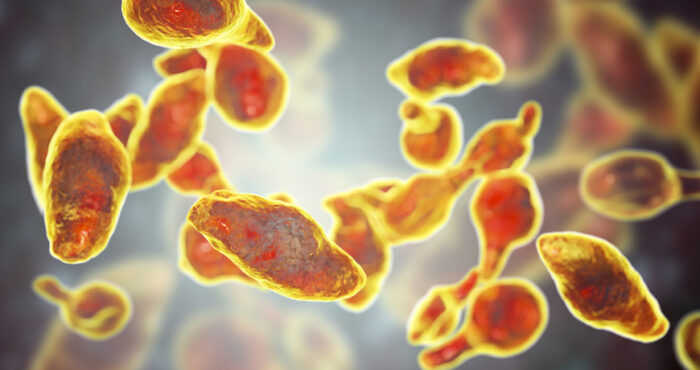High rates of undiagnosed infection among Black trans women
Black transgender women have one of the highest rates of HIV of any population in the U.S., with one study estimating an HIV prevalence rate of 56%. Yet the extent to which Black trans women are able to access HIV testing, treatment and care has not been well characterized. HIV and epidemiology data oftentimes lump relatively small numbers of trans women in with a much larger community of men who have sex with men—obscuring the experiences Black trans women have getting diagnosed and linked to care.
Now, a recent study highlights the startling disparities Black trans women experience in HIV diagnosis and care. In a study with 422 Black trans women from six U.S. cities, nearly 60% of women living with HIV were undiagnosed, only 38% were getting regular HIV care and about a quarter (24.5%) were virally suppressed.
“In the general population, only about 18% of people living with HIV are estimated to be undiagnosed, compared to the 60% of Black transgender women in our study that were undiagnosed. That’s a huge disparity,” said lead author Leigh Bukowski, MPH.
“These numbers aren’t really a surprise,” said Tiommi Luckett, from Positive Women’s Network, who was not affiliated with the study.
“We’ve been aware that Black trans women are falling through the cracks in HIV testing and care for a long time. We can fix this—but we’ve got to take a hard look at how our systems of care are failing Black trans women. And we have to be aware of what it takes for Black trans women to go in and get tested—if they’re welcome in the space, if they see themselves reflected in the staff, if transportation is an issue, and if they feel safe accessing services,” said Luckett.
Black trans women from across the U.S. participated
Black trans women recruited from Black Pride events in Atlanta, Detroit, Houston, Memphis, Philadelphia and Washington D.C. participated from 2014 to 2017 as part of the Promoting Our Worth, Equality, and Resilience (POWER) study.
Participants completed an anonymous self-administered health survey which asked about their HIV status, HIV care, assault, violence, substance use, social support, incarceration, housing status, hormone use, discrimination, sex work and depressive symptoms. Participants were then offered confidential HIV testing, or anonymous HIV testing if the participant did not want to know their HIV status.
The average age of women in the study was 30.7. Most (78%) had health insurance coverage, and 44% reported being able to access health care.
Violence, discrimination and other forms of oppression were commonly reported by participants. About 36% had been incarcerated in the previous two years, more than half (55%) reported experiencing gender discrimination in their lifetime, and 46% reported experiencing racial discrimination in their lifetime. In the past year, 42% had been homeless, 19% reported sex work, 44% reported physical assault and 46% reported violence from an intimate partner.
HIV rates among Black trans women
A total of 190 participants were living with HIV (45% of participants).
The researchers categorized participants as “undiagnosed HIV-positive” if the person tested positive on their HIV test, but indicated that they were HIV-negative or that they did not know their status on the survey. A total of 112 people were categorized in this “undiagnosed HIV-positive” group.
“One of the main findings was that almost 60% of Black trans women were undiagnosed at the time of the survey,” said Bukowski. She cautioned that this finding relies on self-report data, which may be influenced by participants’ reticence to state that they have been diagnosed with HIV on the survey.
There are many things that may prevent Black trans women from being able to access HIV testing services, said Luckett, a Black trans women who has been living with HIV for six years. Lack of transportation, housing, insurance, mistrust of traditional medical settings and other competing life concerns may all play a role.
“If am worried about where I am going to lay my head each night, or if I’m worried about how I’m going to feed myself, the last thing I want to worry about on top of that is an HIV diagnosis. If all looks bleak and hopeless, the last thing I want to find out is that I’m positive,” said Luckett.
Fear of a partner’s reaction can also be a significant barrier.
“You have to look at how violence shows up in people’s lives,” said Luckett. “We [trans women] are no different than anyone else. We want to be loved and feel loved. But a lot of times we’re looking for love in the wrong places. When our partners’ masculinity is threatened, we can become victims of violence. If I go and get an HIV test, and it comes back positive, I could be putting my life in danger.”
To bring in Black trans women, Luckett said that health care providers can incentivize testing with a meal or gift card and must go to where Black trans women already are.
“Come to where we are, because we don’t feel safe going where you are,” she said.
High rates of HIV care after diagnosis
Although the percentage of Black trans women who indicated HIV-positive status on the suvey was low, most of those who did were already accessing HIV care. Of the 78 people who knew of their HIV status, 96% were linked to care, 92% were receiving regular HIV care, 83% were receiving HIV medications and 58% were virally suppressed.
This was “a bright spot” in the research, said Bukowski. Although the rate of undiagnosed HIV was high, most people who were diagnosed were receiving HIV treatment and care.
Women who reported being incarcerated, homeless, using three or more drugs, sex work and physical assault were less likely to be virally suppressed. It was a surprise to the researchers, said Bukowski, that hormone use was also negatively associated with viral suppression.
“When you consider the syndemic nature of heath disparities in this population, and all of the things that Black trans women are experiencing, perhaps it comes down to an either-or decision,” she said. “You can either get hormones or HIV treatment. And they prioritize hormones. In many places, these services are not co-located. So you’re not getting your HIV care in the same place that you’re getting your gender-affirming health care. When you’re faced with these obstacles, it might come down to, ‘What’s most important to me?’”
Luckett pointed to the importance of providing gender-affirming health care such as hormone therapy in the same place as HIV care. “Many women prioritize hormone therapy as more important than antiretroviral therapy,” she said. “Services must be as comprehensive as possible. We don’t always have access to the services we need.”
—
Source
Bukowski, L.A. and colleagues. Characterizing the HIV Care Continuum and Identifying Barriers and Facilitators to HIV Diagnosis and Viral Suppression among Black Transgender Women in the United States. JAIDS, December 2018.










